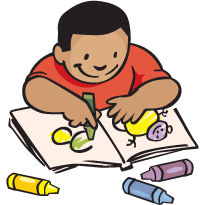Boston Children's Museum
308 Congress Street, Boston, MA 02210
617-426-6500
© Boston Children’s Museum 2025
Website Design by JackrabbitSo much of discovery relies on observation skills. By giving students an opportunity to really look at the world around them and the experiences they have, you give them the chance to develop and grow into good observers.
Print out the journal pages and gather materials.

If using these journal pages to help kids reflect on a recent activity, talk about what they did and ask them how they felt about the experience. These pages can also be used to record what your students find in the Wildlife Shares Your Habitat and Bugs Share Your Habitat activities.
Write and record your observations, thoughts and ideas. Make some drawings too!
After your students have spent some time on their journals, bring them together to have a quick discussion. What are some of the things they noticed? What descriptive words did they use? Ask them to share what they wrote in the data section – does everyone have the same information? Brainstorm with your students around ways that they might gather their pages together into a book. Some suggestions are using three-ring binders, stapling the pages together, binding them with yarn or a book binding machine, etc. Tell them that they’ll be filling out this journal throughout the year to make a book that they can keep.
Have your students finish their journal entries, then bind all of the pages together using staplers, hole punches, etc. The next time you give your students a chance to record their observations, drawings and thoughts, hand out their journals—by the end of the year, they can have a journal detailing their experiences!